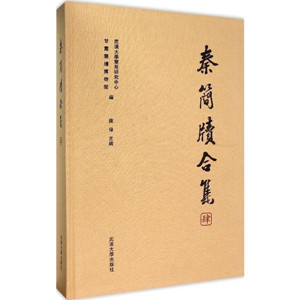Qin mysteries uncovered in bamboo slips
Author : Hou Xudong Source : Chinese Social Sciences Today 2016-09-20

Compilation of Qin bamboo slips
Chief Editor: Chen Wei
Publisher: Wuhan University Press
The Qin Dynasty (221-206 BC) united China for the first time, creating in the process an influential administrative system that was passed on to the following dynasties. The details of this administration changed over the centuries, and the earliest records are difficult to analyze because, as Sima Qian, a historian of the Han Dynasty (206 BC-AD 220) points out, few historic records on the Qin dynasty were preserved because the empire only existed for a short period, and a large number of books were burned by Qin Shihuang.
Systematic historic reviews of the dynasty are rare, but notable works include Historical Records written by Sima, as well as the Book of Lord Shang, Mister Lü’s Spring and Autumn Annuals, and Strategies of the Warring State. But these documents are mostly general descriptions that offer unsubstantial materials concerning the details of how the Qin Dynasty grew from a small country in the western region into a powerful hegemon.
In 1975, a large amount of bamboo slips were excavated in the 11th Qin tomb in Hubei Province, which marked the new era of Qin historical studies. Over the next 40 years, 12 batches of more than 45,000 bamboo slips were found around the nation. The contents include laws and decrees, daily records, calendar days, administrative documents and medical books, enriching research materials to a large extent and providing new research orientations.
Compilations of Qin Bamboo Slips is edited by Chen Wei, dean of the Center of Bamboo and Silk Manuscripts at Wuhan University. It is also the result of five years of joint efforts from Chen and various museums and archaeological research institutes. The book edited six out of the 12 batches of bamboo slips of the Qin state, namely those excavated from Shuihudi, Zhoujiatai, Longgang, Yueshan, Haojiaping and Fangmatan. In general, the book contributes to research in the following ways:
First, it provides the best printed version of the documents so far. The six batches of bamboo slips were excavated between 1975 and 1993, with the latest batch, namely, Bamboo Slips of the Qin State from Fangmatan, announced in 2009. However, because there was no efficient technological support, previous printed versions failed to provide infrared contrast photographs, limiting the interpretation of characters on the slips. This time allowed clearer photographs, which also facilitated the interpretation of texts on the slips.
In addition, the sequence of these slips was re-confirmed. Former mistakes were found and adjusted. For example, in a volume called Liangri, slip No. 73 should be split into two pieces and respectively joined with slip No. 75 and 78. Also, Slip No. 78 plus No.73B should be put before slip No. 68. Such problems are common in four of the six batches. Moreover, the book added more meanings to formerly recognized characters. For example, the word Dafugua this time is defined as the widow of a senior official, while previously only the Gua part was explained as “Less.” Although trivial, these minor changes are a big step in promoting research.
Ye Shengtao made Chinese fairy tales from a wilderness
Ye Shengtao (1894–1988) created the first collection of fairy tales in the history of Chinese children’s literature...
-
How northern ethnicities integrated into Chinese nation
2023-09-18
-
Mogao caves
2023-09-12
-
Mogao Grottoes as ‘a place of pilgrimage’
2023-09-12
-
Time-honored architectural traditions in China
2023-08-29
-
Disentangling the civilizational evolution of China
2023-08-28
-
AI ethics in science fiction
2023-08-23














 2011-2013 by www.cssn.cn. All Rights Reserved
2011-2013 by www.cssn.cn. All Rights Reserved